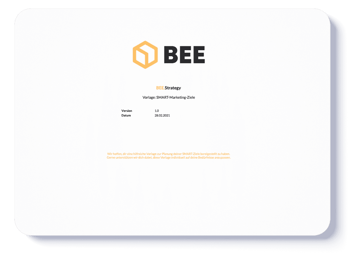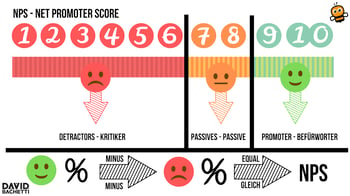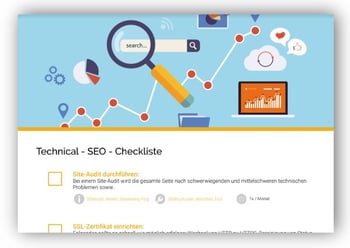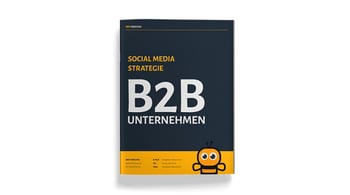-
Digital Marketing
We help you to use your digital potential. For a strong positioning, more visibility and more leads.
Sales Enablement
Targeted customer acquisition for more sales. Identify, target and close the right leads.
Get Growth ready
With the BEE.Transformance model, we bring continuous and profitable growth to your company. A new mindset for your team.
Industries
We transform your challenges into opportunities through the experience we have gained from projects in these industries.
-
HubSpot Services
As a HubSpot Diamond Partner, we help you implement your digital growth strategy with a focus on performance - by implementing and integrating new and existing systems as well as 3rd party apps.
HubSpot Thought Leader
As a HubSpot Diamond Partner with +50 certifications, host of the HubSpot User Group Zurich, HubSpot Trainer and HuSpot User Champions, you have access to in-depth HubSpot expertise.
HubSpot Solutions
The BEE.Theme offers you more creative freedom than any other theme on the market. Whether you're a beginner or a professional, a creative mind or a digital agency - with the BEE theme, you can easily unleash the maximum power for your pages in HubSpot CMS.
-
BEE.Blog
Knowledge around digital marketing, digital sales, technology, data intelligence and employees.
Knowledge Base
Pure knowledge: everything essential concentrated, compact, digitally prepared for you and ready to download.
What is inbound?
The most effective way to successfully combine digital marketing and digital sales.
-
BEE.Team
The BEE.Performers: many different characters - with one thing in common: the fascination for a digital world.
References
More than 100 large and small companies have already started with BEE: to more visibility, more performance, more growth.
Invest
Participate in the growth of BEE and become part of the BEE Growth Story by purchasing Digital Share Tokens.
We're hiring
Become a BEE.Performer! Are you ready for your own transformation?
Digital Marketing KPIs - Guide to measure marketing performance

There’s a misconception that marketing is an expensive activity, and the results it yields cannot be measured. In actual fact, when it comes to digital marketing, there are, indeed, measurable key figures, and success can be proven. This content is suitable for marketers who have just started to implement digital measures or intend to do so in the near future. It is also for companies that are already active in the online sector but want to prove their efforts with facts. To refresh or expand your knowledge of inbound, you may want to start with our Guide to Inbound Marketing first.
You don't have time to read through the whole manual? Then simply download our free guide:
Define smart goals
Since pure data collection without information content is not very effective, it is just as important not only to make digital marketing measurable, but also to analyse the data in order to derive the right recommendations for action. This is the only way to achieve the defined goals.
No one has an unlimited budget, that’s why marketers need to be careful where funds are allocated. By having clear KPIs, decisioins become easier to make, and goals start to look more attainable. You should look to set one to two KPIs per area of interest. 
Prepare for SMART Marketing with this Excel spreadsheet. If you're planning for a new year, quarter or month, it's time to set your SMART marketing goals set.
SMART is a methodology that helps you to set specific and and achievable goals. SMART stands for Specific, Measurable, Achievable, Relevant and Time-bound.
Difference between KPI & key figures
The term KPI means Key Performance Indicator. KPI is often mistakenly used as a synonym for the term key performance indicator. This usage is only partially correct and requires a more precise definition.
Key performance indicators and KPIs differ in terms of their informative value. The informative value of a key figure is usually generally valid, which is why the same key figures can also be compared between different companies. KPIs, on the other hand, are used to measure the important objectives within a company. KPIs are therefore individually aligned key figures for measuring a specific corporate objective and offer a way to measure success..These KPIs will also guide you towards adjustments you could make to optimise your marketing efforts and accomplish your goals.
Which tool do I use to measure my data?
There are many ways to measure data. It is important that the goals and the measurements are always done with the same tool. For example, the definition of sessions is different for Google Analytics and HubSpot because the data these tools collect is different. At BEE, for the 2018 period, we found a difference in total traffic (sessions) of 19.3% between HubSpot and Google Analytics. While the different tools help to establish a trend, they should never be in direct comparison together.
Possible KPIs at Inbound Marketing - Part 1
Attract Phase
Digital visibility
There are two ways to increase digital visibility:
- Long-term organic visibility (search engines, social media, etc.)
- Paid visibility through ads, native advertising, etc.
Tools like SEMRush or Sistrix show a visibility index oЯ r trend with their own algorithm. This measures the average position of keywords (organic as well as through ads) and thus calculates the potential traffic through the click rate. However, since these tools are not based on effective figures, this value is to be understood as a guideline and trend.
Convert Phase
Inbound Leads
Inbound leads are all contacts captured through a digital activity. These are considered to be:
- Download Premium Content
- Registration for newsletter, blog etc.
- Contact requests
- Offer requests
- Demo requests
- etc.
Marketing Qualified Leads (MQL)
Ideally, inbound leads are split into Marketing Qualified Leads (MQL) and Sales Qualified Leads (SQL).
However, in order to be able to determine an MQL at all, the buyer personas for your company must first be defined and a prospect fit matrix must be worked out. It is best to involve all important departments.
 What is an MQL and an SQL must therefore be defined by each company for itself. With this systematic approach, you qualify exactly the contacts that are interesting for your company. In lead nurturing, the MQL is then further played with suitable, specially produced content and qualified until a sales qualified lead (SQL) is ready to buy.
What is an MQL and an SQL must therefore be defined by each company for itself. With this systematic approach, you qualify exactly the contacts that are interesting for your company. In lead nurturing, the MQL is then further played with suitable, specially produced content and qualified until a sales qualified lead (SQL) is ready to buy.
Possible KPIs at Inbound Marketing - Part 2
Close Phase
Sales qualified Leads (SQL)
As a rule, a contact is considered to be an SQL if it has already developed into a genuine prospective buyer - through its own activities and/or with the support of marketing measures. Sales Qualified Leads are therefore often created from Marketing Qualified Leads. On the way from MQL to SQL, this lead's interest in a certain topic has been strengthened to such an extent that a personal contact with the lead is appropriate.
However, an SQL may have informed itself in advance by other means to such an extent that it becomes a direct SQL. It makes sense to define an SQL in such a way that an action must be taken by the sales department.
Examples of direct queries:
- Demo Request
- Direct contact request
- Quote request
- Concrete service request
If an SQL subsequently becomes a customer, there are other very important KPIs that should be added to the analysis should be added to the analysis:
New customers
Number of new customers
Here you determine how many new customers your company has acquired in a specific period of time in a specific region. in a specific region during a specific period of time.
New Customer Acquisition Costs (CAC)
Based on the number of new customers, you can then calculate the cost of new customer acquisition:
What is it exactly?
Customer Acquisition Cost (CAC) is a metric that indicates the average total cost your company spends to acquire a new customer.
How is this calculated?
Take your total sales and marketing spend for a given period and divide it by the number of new customers you acquired during that period.
What does this mean and why is it important?
The goal is to achieve a low CAC. Increasing the CAC means spending comparatively more on each new customer. The efficiency of sales and marketing must be analyzed.
Marketing share of customer acquisition costs
You can also use the CAC to calculate your marketing share of customer acquisition costs:
What is it exactly?
The marketing share of customer acquisition costs (M%-CAC) as a percentage.
How is this calculated?
All marketing costs divided by the total sales and marketing costs you used to calculate the CAC.
What does it mean and why is the metric important?
The M% CAC can show you how your marketing team's performance and spend is impacting your overall customer acquisition costs. An increase in M%-CAC can mean a number of factors:
- Your sales team might have achieved too low commissions and/or bonuses, i.e. too few new customers.
- Your marketing team is spending too much.
- You are in an investment phase and spending more on marketing to deliver more quality leads and improve your sales productivity.
Net profit per new customer
Instead of just looking at the number of new customers, you calculate the net profit generated per new customer or per time-specific duration (e.g., per month).
After calculating this number, you are able to derive the payback period of the customer acquisition costs.
Payback period for customer acquisition costs
What is it exactly?
The time to payback CAC shows how many months it takes for your company to recover the money it invested in new customer acquisition.
How is this calculated?
You calculate the time to payback CAC by taking your CAC and dividing it by your net profit per month for your average new customer.
What does this mean and why is the metric important?
In industries where your customers pay a monthly or annual fee, you want your payback time to be under 12 months. The less time it takes to pay back your CAC, the sooner you can start making money from your new customers.
New customers gained through marketing
From the number of new customers and the investment of the marketing department you can now see what share the departments have in the acquisition of new customers.
What is it exactly?
This key figure shows what proportion of your total customer acquisitions comes directly from marketing activities.
How is this calculated?
To calculate new customers generated by marketing, you take all new customers within a certain time period and pick out those of them that were generated as leads by generated by your marketing team.
What does it mean and why is it important?
This metric illustrates the impact that your marketing team's lead generation efforts have on lead generation efforts have on acquiring new customers. This percentage is based on your sales and marketing relationship and structure, so your ideal ratio may vary depending on your business model. A company with an outside sales team and an inside sales support can achieve a profit margin of 20-40%, while for a company with an inside sales team and a leadership-oriented marketing team, it could be 40-80%.
could be.
Delight Phase
Net promoter score (NPS)
What is it exactly?
The Net Promoter Score is an important KPI that measures customer satisfaction. For this purpose, customers are asked about their satisfaction by means of a standardized customer survey and can rate the company with a point value between 0 and 10.
Ratings of 9 to 10 are considered Promoters, 7 to 8 are Passives, and 0 to 6 are Detractors.
How is this calculated?

What does it mean and why is it important?
This value provides information about how satisfied your customers are and how strong the customer's bond with your company is. The value can be between -100 and +100. Anything above 0 means that you have more promoters than detractors. That's good, isn't it?
After all, acquiring new customers is six to seven times more expensive than retaining customers, making customer satisfaction essential. In addition, a happy customer is more likely to recommend your company to others or use additional services from you.
Increase in sales to existing customers
What is it?
The existing customer is willing to invest more money in your performance or service. This difference must be measured within a fixed time frame (for example, compared to the previous year, previous quarter, etc.).
How is this calculated?
Sales year xy - Sales previous year = Sales increase
What does this mean and why is the key figure important?
This key figure allows conclusions to be drawn about customer satisfaction, but these conclusions must be with caution. Because how much a customer can invest depends strongly on the market situation. For example, a customer may be very satisfied with your service but, for economic reasons, have no further budget. Or, depending on the industry, the dependence on a brand may be so great that a change is not worthwhile despite dissatisfaction.
From the above-mentioned KPIs for your company, you can now derive a number of key figures that you should monitor in order to be able to use them as a basis for decision-making for future actions. These are listed and described below. Which key figures are useful now depends on what your company has defined as KPI. If your company KPI is to achieve an organic visibility of 7.5%, then you should investigate all the metrics that can increase your organic traffic.
However, if the goal is to increase digital visibility in general, paid ads, social media, email marketing, etc. should be considered in addition to organic metrics.
Inbound key figures - Part 1
Attract
Digital visibility
Website visitors:
|
Key figure |
Explanation and meaning |
|
Total sessions |
The frequency with which a user visited your website during the selected time period. Sessions include more interactions than page views, such as website events and clicks on CTAs. HubSpot does not work with timed sessions compared to Google Analytics, where a 30-minute time window is defined. |
|
Visitors |
Visits are unique visits to the website. "Unique Users. A first visit counts as one page impression (page view). This visitor can be tracked until he deletes the cookies and does not change the device. |
|
Total Views |
Page impressions refers to the number of times a user calls up a website. This also applies if the visitor calls up several pages on the same website. Page impressions do not identify individual users. They are simply all individual page impressions of a website. |
|
Number of views per session |
This metric shows how many pages a user views per session. |
|
Sessions per region |
Depending on how your company is divided or which markets it addresses, it may well be beneficial to analyse the meetings per region. |
|
Blog sessions |
Usually, a company decides to have a blog to provide users with knowledge on certain topics. Maintaining a blog with regular posts can be time-consuming and costly - the goal of the blog should therefore be to achieve increased digital visibility. However, a well-performing blog doesn't happen in a day. Don't be discourad if visitors don't flock to your blog in the first month. |
User behavior on the website
|
Key figure |
Explanation and meaning |
|
Session length |
The session length shows the average time between the beginning and the end of a session. This metric helps you get an idea of how engaged a visitor is with the content on your website with the content on your website. |
|
Bounce rate |
The number of sessions with exactly one Analytics event divided by the total number of sessions is the bounce rate. How exactly the bounce rate is measured in Google Analytics can be seen here and this article explains how the bounce rate is calculated in HubSpot. |
|
Interaction on the website |
Heatmaps can be created using tools such as Hotjar or Lucky Orange - visitors' interactions on the website are tracked. This makes it possible to determine how far visitors scroll on average on the page, where they click and how the mouse is moved. Analyzing this user behavior is very time-consuming, but gives tremendous insights on how to optimize the buyer journey and the content on the website. |
|
Entry rate |
The number of sessions that started with the call to the specific page. This metric shows how often this page was used as an entry point. Homepages and the blog's overview page are often the pages with the highest entry rates. The more difficult it is to find a page - be it in the search engines, but also in your navigation on the website - the lower are the entry rates. |
|
Exit rate |
Exit rates (or exit rates) is the percentage of sessions that ended when the page was accessed. This number shows on which page you lose visitors the most. |
Organic Visibility
|
Key figure |
Explanation and meaning |
|
Traffic from organic search |
This value indicates how many sessions originate from search engines. This metric should definitely be included if organic visibility is a KPI. |
|
% share of organic sessions compared to total. |
The percentage of organic search compared to total traffic shows if you were able to get an increase from organic search. Let's assume that your total sessions have increased, but the percentage of organic traffic has not. Then this means that the increase was achieved through other channels. |
|
Number of backlinks |
Increasing backlinks is an important factor to improve your search engine ranking. Backlinks mean that other domains point to your domain. However, it is important here that quality comes before quantity, because search engines penalize "toxic backlinks" and prefer pages with a high trust and authority score. |
|
Traffic from referrals |
This traffic comes from an original source that is not directly related to your website. For example, from the backlinks that you have. The more relevant a backlink is to the topic, the more clicks you will receive. |
|
Organic Visibility index |
The organic visibility trend according to the algorithm of SEMrush calculates an index. This value is determined by adding specific keywords, for which you want to be ranked. The algorithm measures how often your website appears for the keywords in Google Top 100. 0% means that your domain will never be displayed in the Top 100 100%, on the other hand, you would always be in first place on the SERP for the defined you will always be displayed on position 1 on the SERP (Search Engine Result Page). |
|
Number Toxic Backlinks |
Toxic Score shows the level of how search engines rank the link of the domain. . We at BEE Inbound use SEMrush as a tool. This tool shows the value of the referring links: 60 to 100: Domain is toxic, the risk is high that you will be punished by search engines. 46 to 59: domain is potentially toxic. The goal is to eliminate the toxic backlinks by first asking the operator of the domain to remove the link. If these efforts do not work, you can ask Google to ignore this link. |
|
Domain Score |
This metric shows the importance of a domain based on the quality and number of links pointing to that domain. |
|
Authority Score |
The Authority Score of your site or that of your competitors is a composite metric that measures the strength and popularity of the domain. It is based on the Page Score, the Domain Score, the Trust Score and other data. |
|
Trust Score |
This value indicates the trustworthiness of a particular domain. It is based on the number of backlinks from trusted websites. |
|
Keywords tracking |
It is very important to keep an eye on the keyword positions for strategically important keywords in order to be able to align your content with them. You can also use tools like SEMrush to see how your competitors rank for these keywords. |
|
Traffic from social media posts (non-promoted posts) |
This metric indicates how often your community comes to your website via a link in a post. your website via a link in a post. Note: You can also achieve more traffic through organic measures by a social media strategy. In the first step you have to build up a community to achieve a certain reach. Prerequisite for community building is that the user has already become aware of you. has already become aware of you. That's why I'm not including other social media metrics and assign them to the Delight phase instead. Customers and users who are related to the company are usually recorded as followers. listed as followers. In the case of paid social media reach, this must be considered in a more differentiated way. |
 Technical-SEO is excluded from the above key figures. You are interested in the technical measures with which you can with which you can improve your ranking? Then this downloadable checklist will help you.
Technical-SEO is excluded from the above key figures. You are interested in the technical measures with which you can with which you can improve your ranking? Then this downloadable checklist will help you.
Inbound key figures - Part 2
Paid visibility
|
Key figure |
Explanation and meaning |
|
Paid Ads Impressions |
Whether it's Google Ads, Social Ads, Native Advertising or similar, it's important for visibility success to measure how often your target audience sees the advertised ads. |
|
Cost/Impression |
You can calculate how much an impression costs you by dividing the total costs per period by the number of impressions in the same period. This helps to understand which keywords/campaigns you can buy impressions for. In addition, the costs show how much your competitors invest in the same keywords. Although there are better indicators for this, such as the keywords difficulty. |
|
Paid Ads Clicks |
You don't just want your target audience to see your posts - you want them to click on them to drive them to your website. This value is measured here. It also tells you how good your ads are: Right keywords, good and appealing ad texts, right target audience chosen etc. |
|
Click-through rate (CTR) |
The CTR indicates the click-through rate as a percentage of impressions. |
|
Cost per Click (CPC) |
As with cost per impressions, you can use CPC to calculate the cost of a click. |
Convert
|
Key figure |
Explanation and meaning |
|
Number of inbound leads |
Number of leads you generated through digital marketing. Here it is exciting to see from which sources new contacts have resulted in order to analyse the efficiency of the sources. Possible sources: ● Offline leads ● Direct traffic ● Social media ● Organic search ● Referrals E-mails (for example, when emails are forwarded and a new contact results a new contact results from this) ● Google Ads ● Social ads ● etc. |
|
Quantity MQL |
Number of leads you generated through digital marketing. MQLs are a good match to your defined buyer persona. |
|
Cost per Lead (CPL) |
On average, how much did it cost you to acquire a lead? You calculate this value by dividing your digital marketing efforts by the number of leads. by the number of leads. You can also calculate this value specifically for MQL, SQL, etc. |
|
Number of applicants |
This figure is an important indicator for inbound recruiting. It indicates how many people have applied directly online via the website and not via a third-party application platform. |
|
Blog subscribers |
The number of blog subscribers tells you whether your blog is generating leads. In addition, you can conclude how valuable the content is for your readers. |
|
Newsletter subscribers |
You send out a digital newsletter? Then increasing the number of newsletter subscribers should be the goal. |
|
Landing page performance |
If you have not integrated your forms directly on the web page but in landing pages, the landing page performance is to be consulted to calculate the efficiency. For example, if you have a lot of views, but a low conversion, then the conversion rate is also low. This could be an indication that the content on the landing page is not sufficiently convincing, or that you make it difficult for your visitor to fill out the form, because it is either because it's not easy to find or because you're asking for too much information. |
Close
|
Key figure |
Explanation and meaning |
|
Email or Workflow Performance |
Here, it is all about providing the lead with right and valuable content so that it becomes a SQL. Performance can be measured by the following metrics: ○ Sessions from emails ○ Open rates ○ Click rates ○ Contact churn/opt-out rates |
Delight
|
Key figure |
Explanation and meaning |
|
Followers |
The number of followers on your social media channels indicates how many people want to be in touch with you. |
|
Social media engagement |
Based on engagement, you can understand how strongly your community connects with you. Negative criticism isn't always bad, because it's a sign that someone is engaging with your business. |
|
Number of online ratings |
Both a satisfied and an unsatisfied customer will gladly give you a review on an online portal. The analysis of these reviews provides an important indicator of your customer satisfaction. |
|
Number of recommendations |
A satisfied customer recommends you. This is one of the best indications of how satisfied he really is. A recommendation proves that the customer really trusts you, because he also wants to maintain his own image. |
|
Number of success stories |
A happy customer is usually willing to communicate his satisfaction to the outside world. He will support you in developing a success story and spreading it digitally. |
 For more information on social media strategy and which metrics to consider here, check out our eBook.
For more information on social media strategy and which metrics to consider here, check out our eBook.
Conclusion
In digital marketing, there are a number of metrics that help you measure the success of your efforts. The most important thing in the entire analysis process is to focus on the strategically important KPIs and derive the necessary key figures from them. These key figures must then be analyzed and the right measures derived from them.
This Digital Marketing KPIs Guide is available for download.
BEE is a digital growth solution partner
Transform to perform
For mid-market and corporates in the DACH Region that want to transform their business in order to grow locally and globally, BEE is the highest-ranked digital growth solution partner that combines strategy, execution, data intelligence and people in a transformance model.
What BEE stands for
BOOST performance
EXPAND growth
EXCEED expectations



